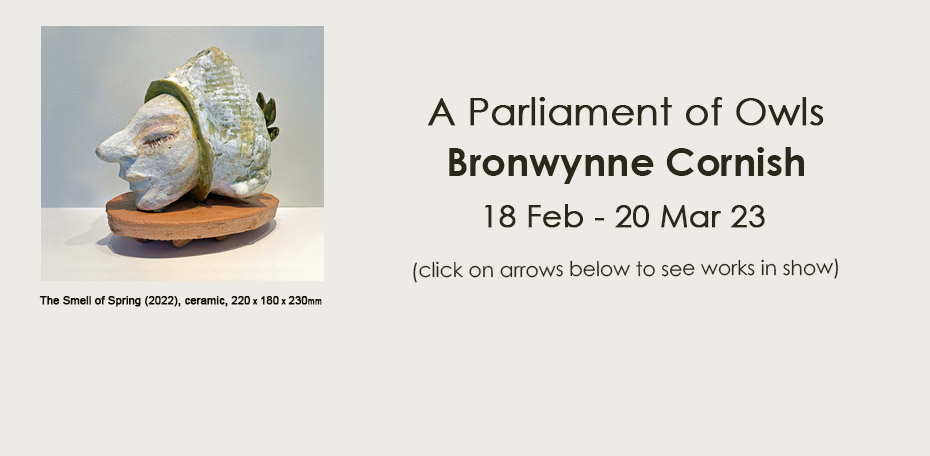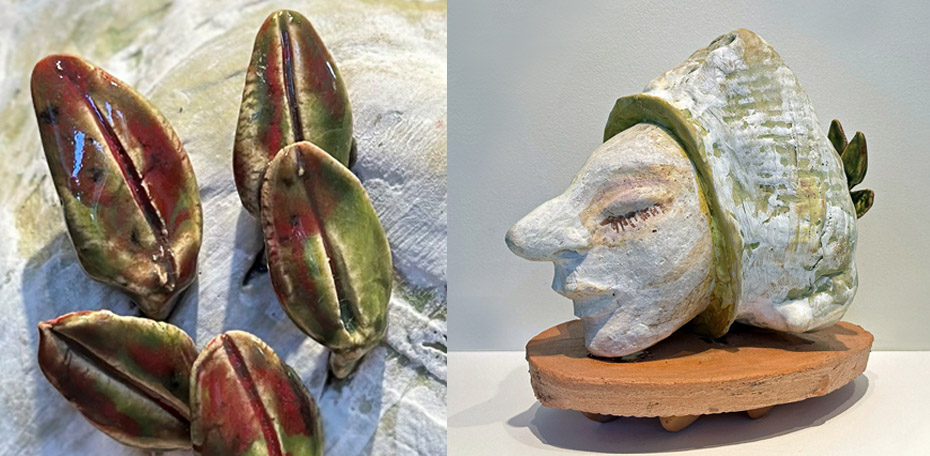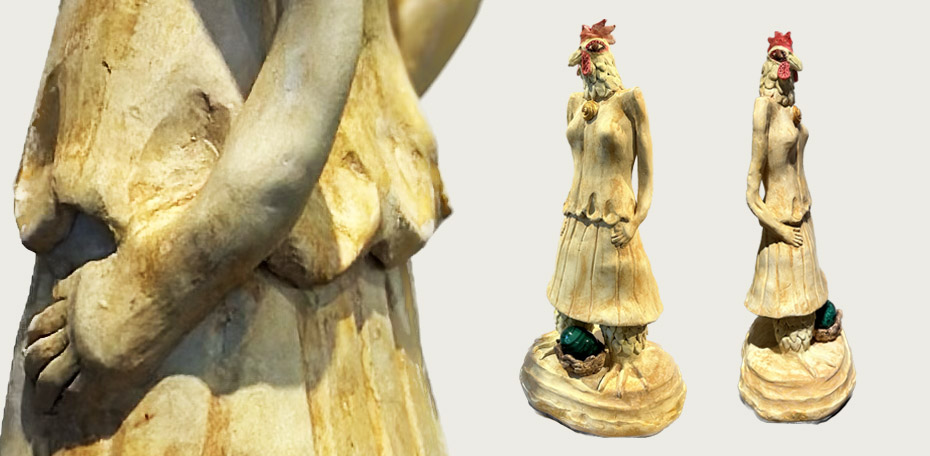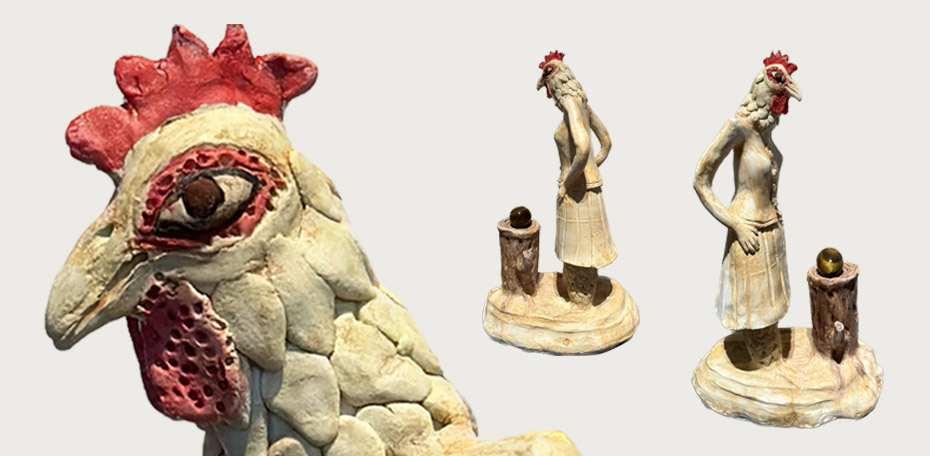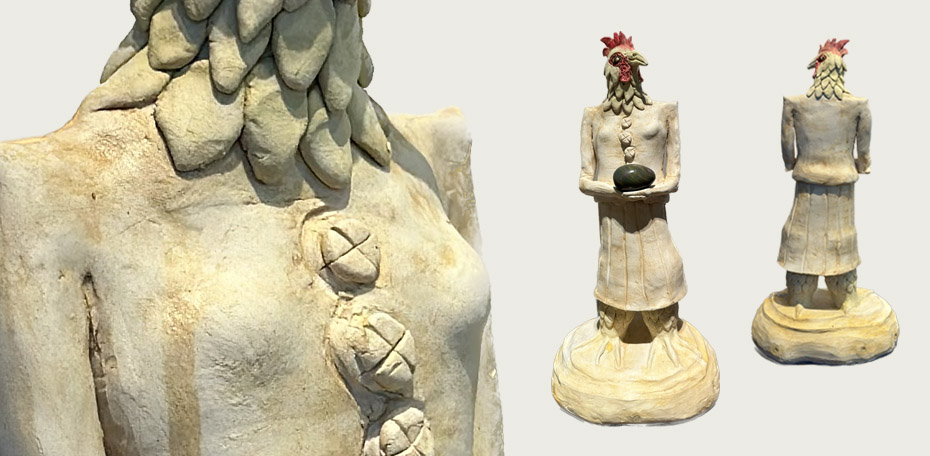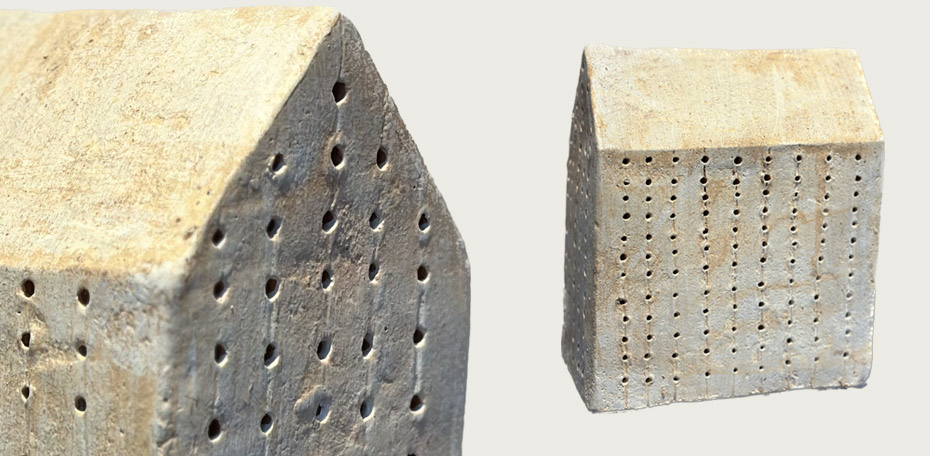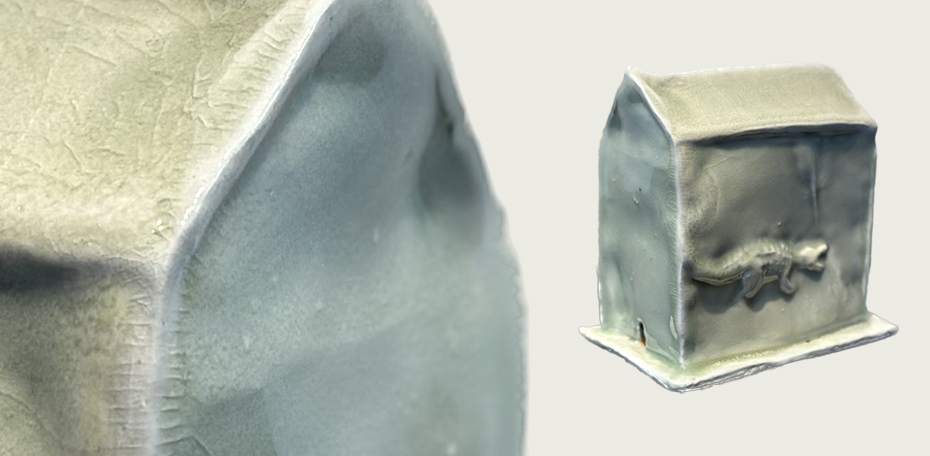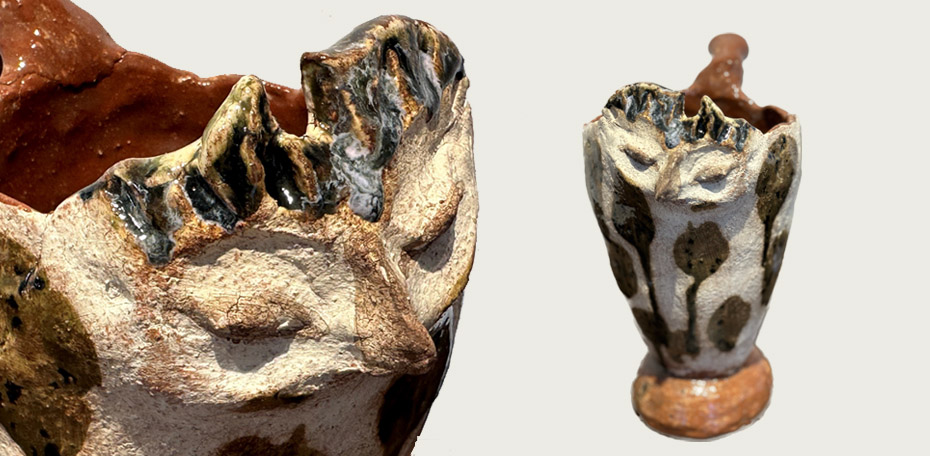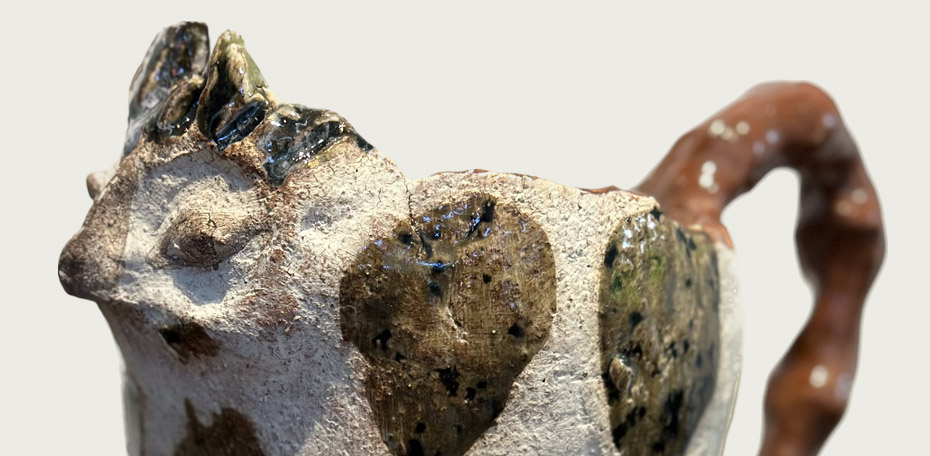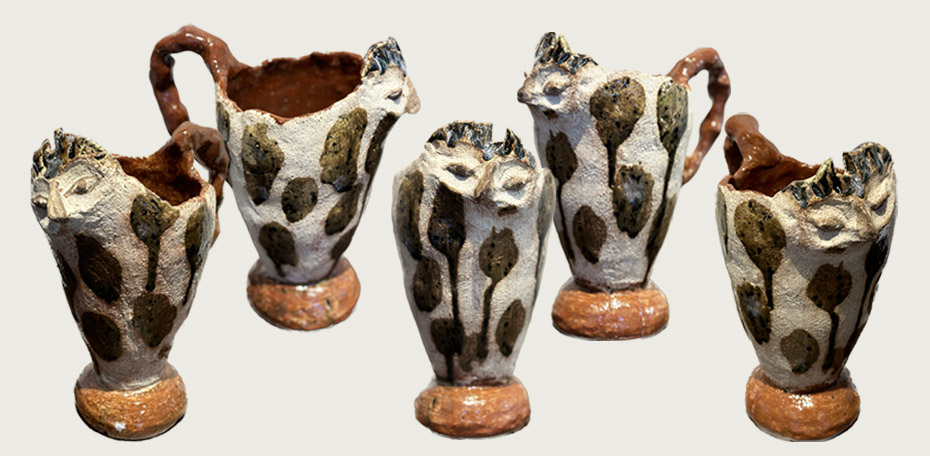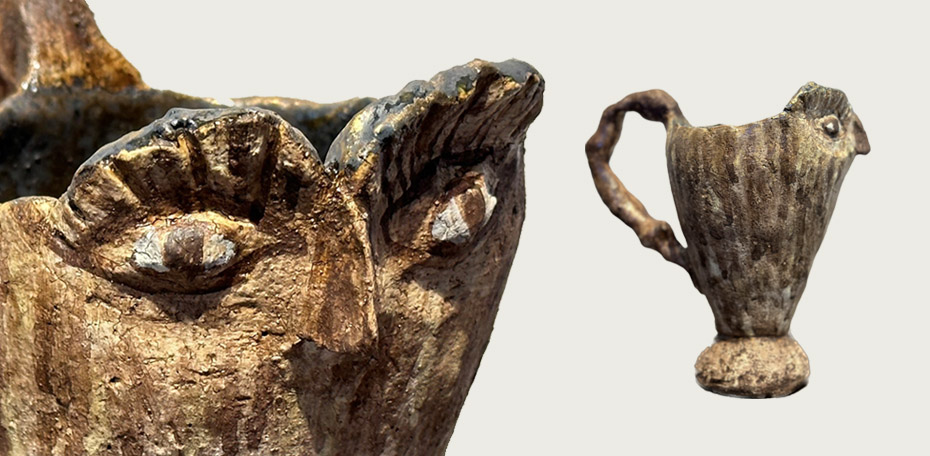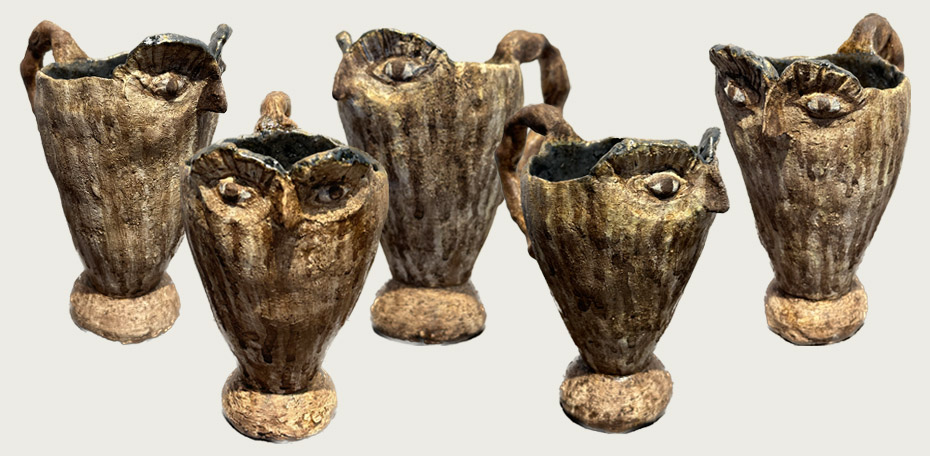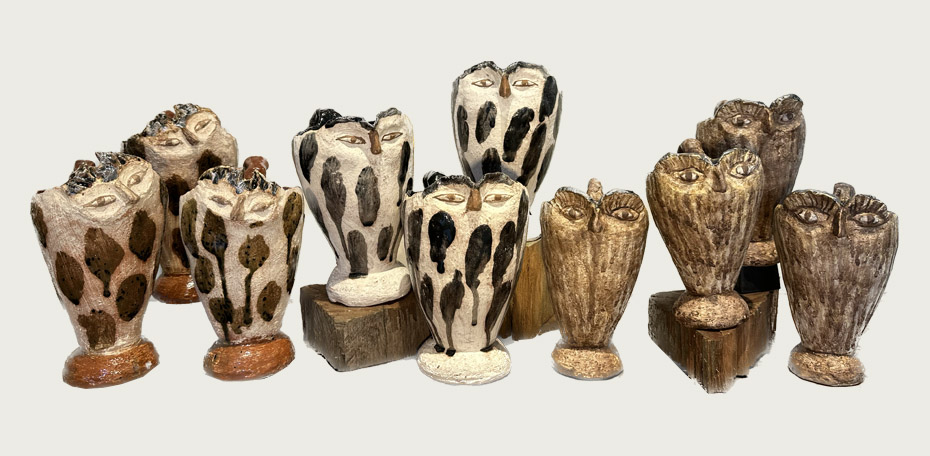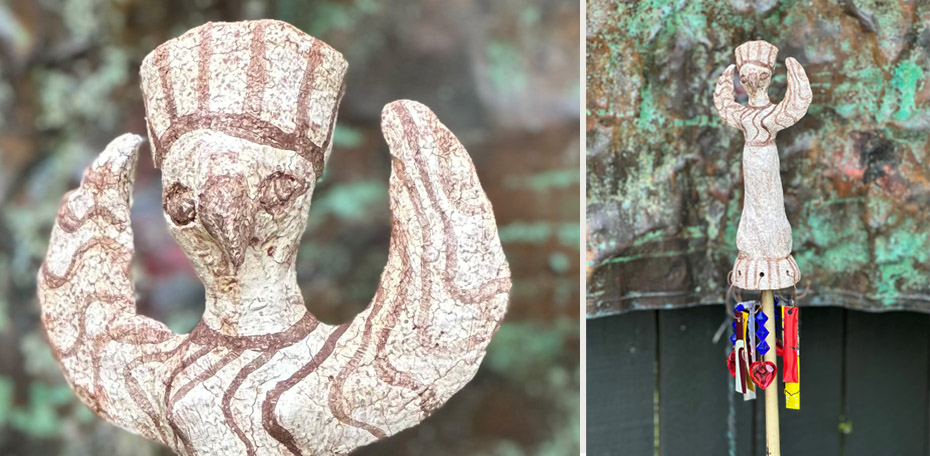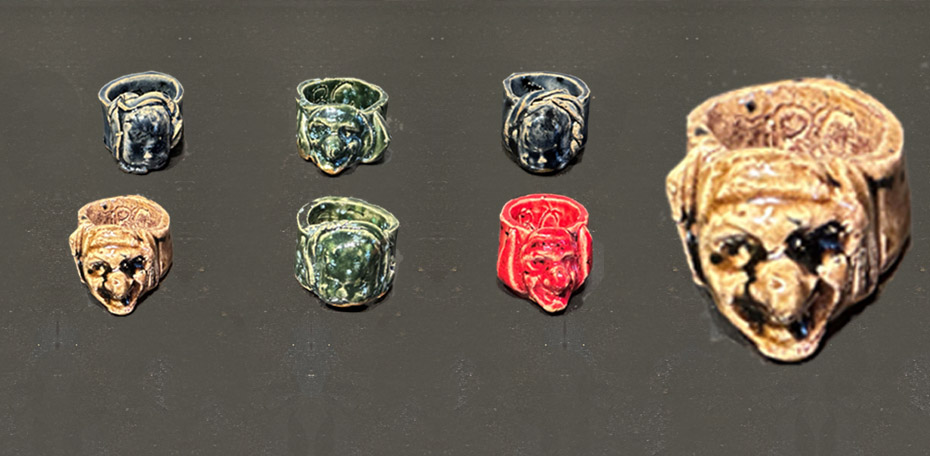Auckland based ceramicist, Bronwynne Cornish was born in Wellington in 1945. She initially studied industrial design at the Wellington Polytechnic School of Design, before changing direction in 1965 and enrolling at the Wellington College of Education. It was here that she was introduced to clay – the material that would change the course of her life.
While living in Wellington, Cornish became acquainted with leading New Zealand potter Helen Mason. She started experimenting with clay and before long, became Mason’s apprentice. In 1969 she moved to Auckland, making work at the Nihotipu pottery in the Waitākere Ranges and selling her work at the early Auckland craft co-operative The Mill.
Around 1970 Cornish relocated to Waiheke Island, where, with Mason’s assistance, she bought a house, setting up a kiln and workshop. She continued to work primarily in porcelain. Her works, which took many forms, but none of a utilitarian nature, transitioned her from the craft market into the art world.
Cornish’s first significant solo exhibition China Cabinet Curiosities was held at the New Vision Gallery in Auckland in 1971. Now, with a career spanning over fifty years, she has become one of New Zealand’s best-known makers of sculptural ceramics.
In the mid 1970’s, Cornish made a transition from porcelain to earthenware clay. These chunkier, more forthright works were comprised of rough, red earthenware, sometimes adorned with paint rather than conventional glaze. Characterised by her connection to the natural world, as well as her own experiences, Cornish’s style of work placed her amongst a small group of ceramicists, all of whom were interested in challenging the status quo of New Zealand pottery. Throughout her career, she has remained content to continue along her own path.
Along with her move back to earthenware came a desire to increase the scale of her works. This led to what she termed as ‘floor works’ – installations of multiple objects brought together with natural materials locating the works in specific places, moments or reference points. Cactus Bay (1978), the first of this type of assemblage, was exhibited at Peter Webb’s Auckland gallery, signalling the fact that the Auckland art world was convinced by Cornish’s vision for her work. The work was purchased by a public art gallery shortly after this exhibition.
A number of large sculptural works later, some of which were labelled by viewers as ‘feminist’, helped Cornish’s practice to be located within what might be described as New Zealand’s Women’s Art or the Feminist Art Movement.
More opportunities to create significant installations followed, including projects at Auckland Art Gallery, Waikato Museum of Art and History, and the Dunedin Public Art Gallery. A survey show of her work was held at the Govett-Brewster Art Gallery, Taranaki in 1986 and in 1996 she was selected as one of a group of artists to represent New Zealand at the second Asia Pacific Triennial of Contemporary Art in Brisbane. In 2014 the MTG Hawke’s Bay organised a major survey of her work (from 1982 to 2013). Titled Mudlark, the exhibition was also shown at the Gus Fisher Gallery in Auckland and at The Dowse Art Museum, Wellington (2015).
In addition to having major shows in all New Zealand’s significant museums and galleries, Cornish’s ceramics are held in major public collections, both throughout New Zealand and overseas – including The Auckland War Memorial Museum; the Dowse Art Museum, Wellington; The New Zealand Ministry of Foreign Affairs, Wellington; The Wallace Collection, Auckland and the Kobayashi Collection, Tokyo.
Cornish’s work looks at the crossover between animals and people – placing those characteristics in fine balance and emphasising the “wildness” that we have lost in our lives today. A Parliament of Owls is no exception.


